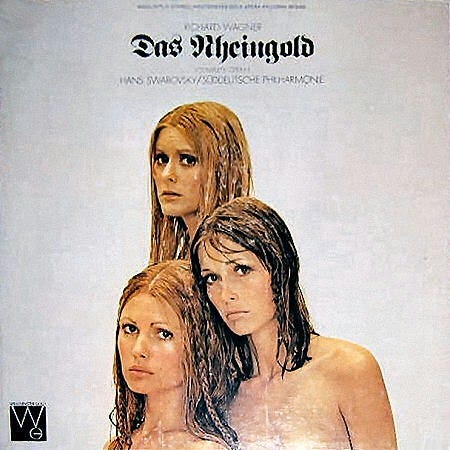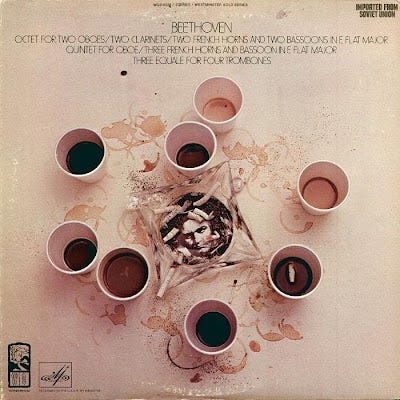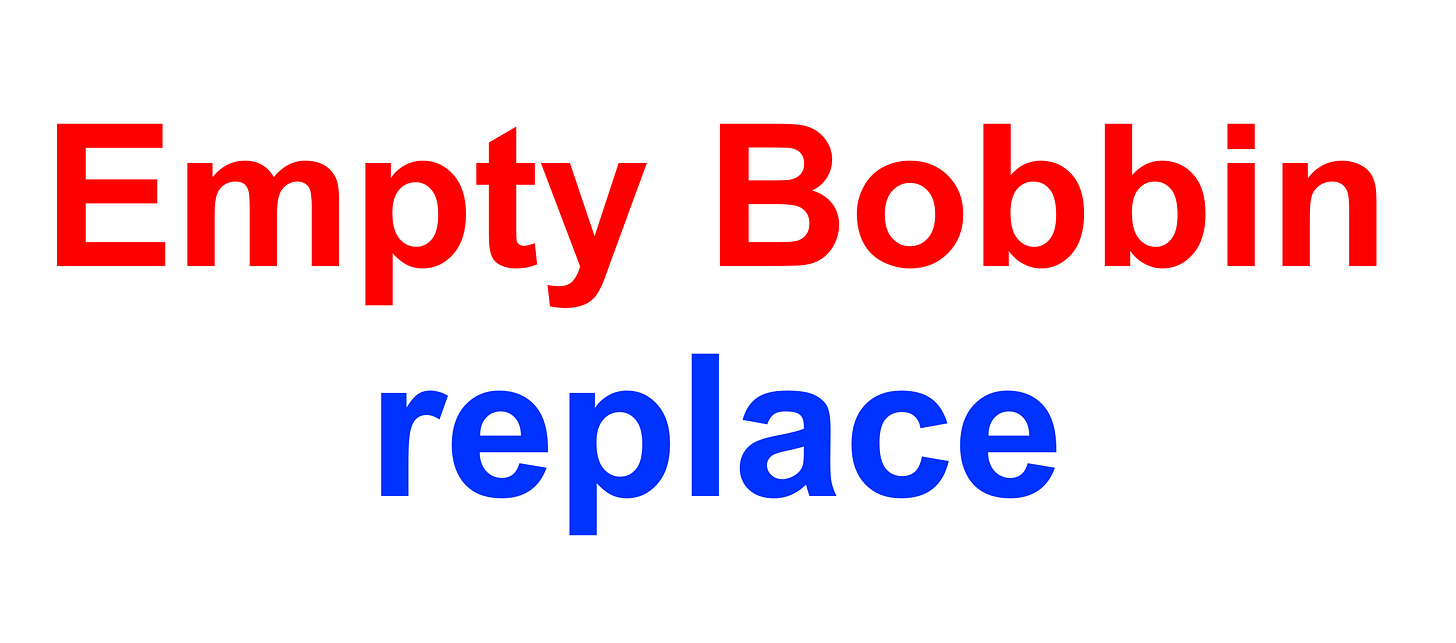Thing 1 – Gold
Copious thanks to Joanna Wyld for reminding me of the existence of gold. Specifically, Westminster Gold, the record label started in 1970 to reissue the Westminster label’s recordings from the 1950s and 1960s. Fine though the recordings no doubt were, the most memorable aspect of these records is the cover designs, mostly done by Christopher Whorf. As Wikipedia puts it, “[they] used whimsy and humor to garner lucrative sales from high school and college-age classical music aficionados.”
The covers are either quite superb or simply ghastly, depending on your point of view. Occasionally they achieve the clever trick of being both.
Here are a few of my favourites.
If you have the stomach for it, here’s a compilation of nearly all of them, to the accompaniment of Mars from Holst’s The Planets (laser guns optional).
And the complete list is here.
Thing 2 – Ghibli
I have come late to the work of Studio Ghibli (yes yes I KNOW) and am yet only a small way through an exploration of their catalogue. Most recently I watched The Boy and the Heron. It’s a strange, beautiful film, full of imagination, magic, darkness and humour, and featuring plentiful bird action beyond the scraggle-beard of the title. Here’s a nice piece about those birds and – more specifically – their shit (contains spoilers).
Curiosity about the Warawara (adorably odd little blobby things that play a medium-to-large role in the film) prompted me to rootle around on the internet for a bit (you may not be surprised to learn that it doesn’t take much to prompt an internet-rootle in these parts). This was time well spent, not least because it threw up this Guide to Miyazaki’s Weird Little Guys.
Ghibli fans will no doubt be able to point me towards loads of interesting Ghibli stuff. My opening bid is this compilation of food scenes from the films.
Thing 3 – Troubleshooting
This single page from the very early days of the internet came from BlueSky user Emma Zhou. It’s simultaneously an embroidery tips page, a cautionary tale for coders, and, as you scroll further, a strange form of art.
Thing 4 – Reference
This volume of Six Things is taking on a distinctly retro vibe, so I thought I’d run with it.
What did people do when they wanted to find things out, and they couldn’t be bothered to wait for search engines to be invented? They called the telephone reference desk, obviously. This is a fascinating piece about life in the Telephone Reference Division of the Brooklyn Public Library in the mid-1980s.
Thing 5 – Migration
I’d like to think that if someone had called the Telephone Reference Division and asked ‘how many birds migrate every night during migration season?’ They would have given a more detailed answer than my standard one, which is to say ‘ooh I don’t know. Loads. Billions, probably’ (the ‘billions’ given in very unconvincing impersonation of Carl Sagan – if you don’t know what that sounds like, someone’s put together this compilation of all the ‘illion’ words said by Sagan in his seminal series Cosmos, because of course they have).
Obviously we can’t count all the migrating birds, but technology is advancing at breakneck pace, and those in the business of migration studies have ever more sophisticated tools at their disposal. Radar has played its part in these studies for over 70 years now, and is very useful for showing the large-scale patterns of these movements. To give you an idea of that scale, here’s an absolutely mindblowing little radar clip, taken last night between six and midnight. That explosion a couple of seconds in? Birds.
It’s from this tweet by Maarten Reyniers, the text of which translates as: “I often share radar images of bird migration here, but the ones from last night's radar Den Helder (KNMI) are really special: birds wait for dusk on the Wadden Islands and in the North of the Netherlands, to then cross en masse to England, where they spend the winter or migrate further.”
Thing 6 – When
This isn’t the only ‘guess the date of the photograph’ game knocking around the internet, but it’s one of the best I’ve seen.











Reminded me of this: https://boingboing.net/2018/01/26/grace-notes.html (a genius 404 page)
For example:
"Some press inquiries have been very odd. … Another, equally enthusiastically and equally unlucky, asked whether a census had been taken of the rats in Great Britain, and if so what was the result. A third, with visions of something really new in agricultural journalism, said that he was thinking of doing a story with a cow as heroine, and did I know of any instances of cows saving human life in any way, putting out fires, or pulling people out of the water?
Then there was a very modern young woman with a Hollywood complex who rushed in one morning and shouted: “Say, just what is this agriculture racket and how do I get the low-down on it?”